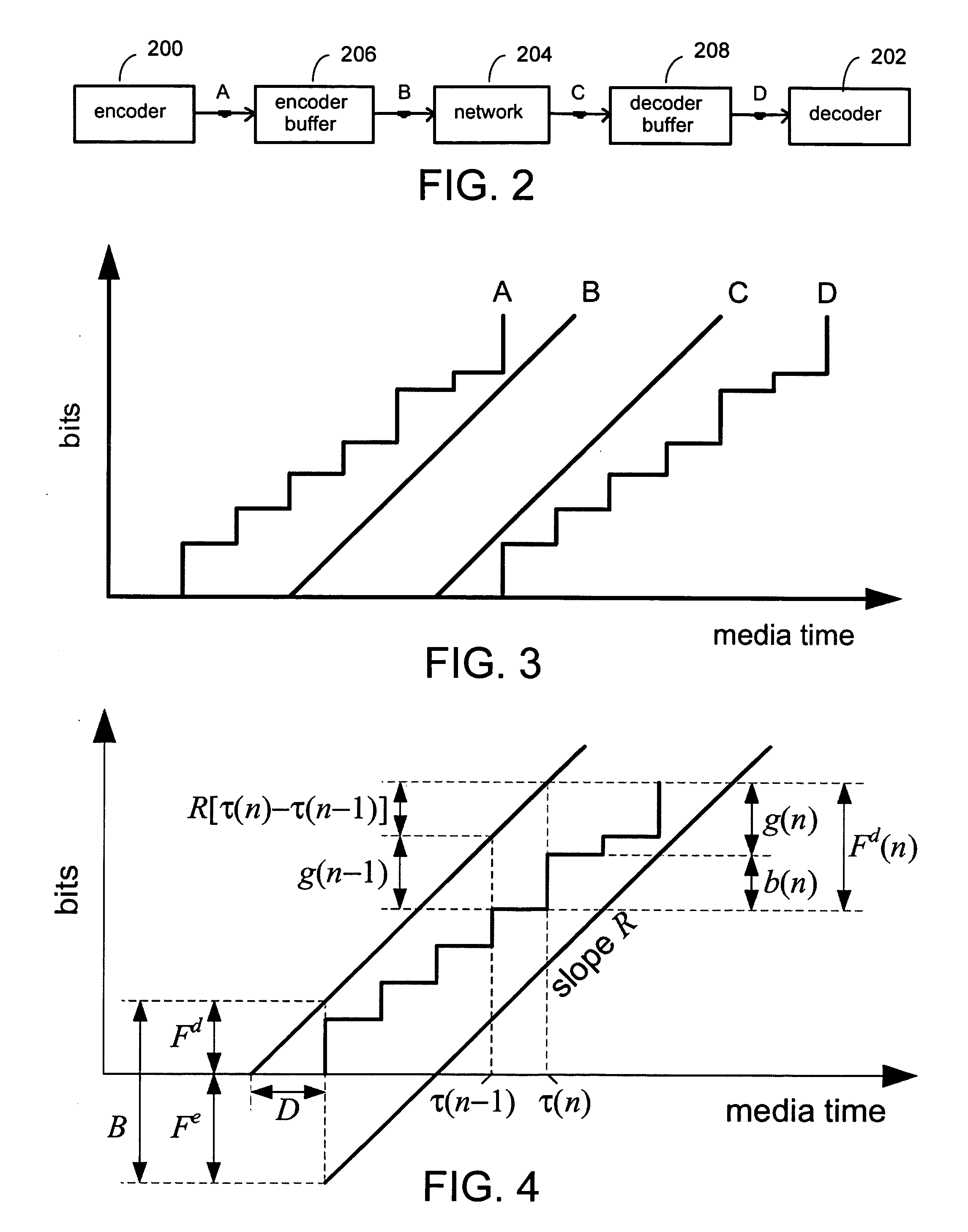System and process for performing an exponentially weighted moving average on streaming data to establish a moving average bit rate
a moving average and streaming data technology, applied in the direction of transmission monitoring, line-transmission, electrical equipment, etc., can solve the problems of network outages lasting many seconds, the need to adapt to changing network conditions, and the fluctuation of available bandwidth, so as to maximize the quality of data playback, smooth the average coding bit rate over consecutive periods, and the effect of improving the quality of data
- Summary
- Abstract
- Description
- Claims
- Application Information
AI Technical Summary
Benefits of technology
Problems solved by technology
Method used
Image
Examples
Embodiment Construction
[0049] In the following description of the preferred embodiments of the present invention, reference is made to the accompanying drawings which form a part hereof, and in which is shown by way of illustration specific embodiments in which the invention may be practiced. It is understood that other embodiments may be utilized and structural changes may be made without departing from the scope of the present invention.
I. THE COMPUTING ENVIRONMENT
[0050] Before providing a description of the preferred embodiments of the present invention, a brief, general description of a suitable computing environment in which portions of the invention may be implemented will be described. FIG. 1 illustrates an example of a suitable computing system environment 100. The computing system environment 100 is only one example of a suitable computing environment and is not intended to suggest any limitation as to the scope of use or functionality of the invention. Neither should the computing environment ...
PUM
 Login to View More
Login to View More Abstract
Description
Claims
Application Information
 Login to View More
Login to View More - R&D
- Intellectual Property
- Life Sciences
- Materials
- Tech Scout
- Unparalleled Data Quality
- Higher Quality Content
- 60% Fewer Hallucinations
Browse by: Latest US Patents, China's latest patents, Technical Efficacy Thesaurus, Application Domain, Technology Topic, Popular Technical Reports.
© 2025 PatSnap. All rights reserved.Legal|Privacy policy|Modern Slavery Act Transparency Statement|Sitemap|About US| Contact US: help@patsnap.com



